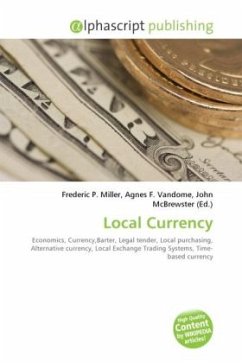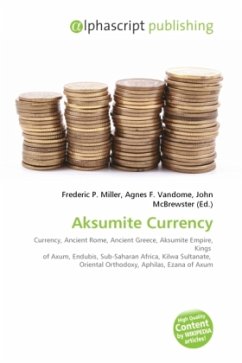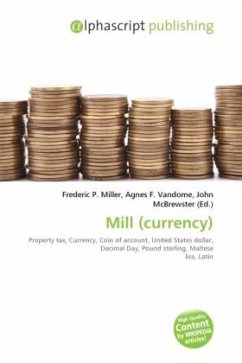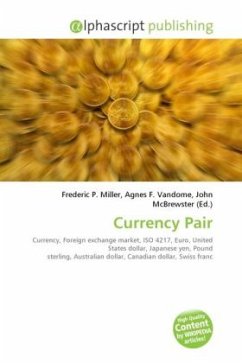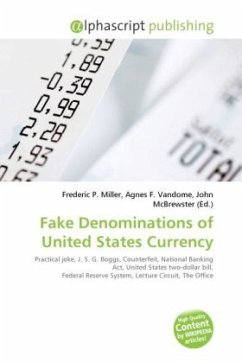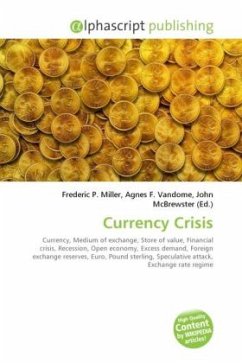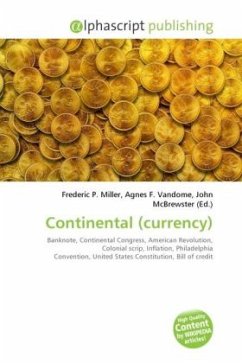
Denomination (currency)
Versandkostenfrei!
Versandfertig in 6-10 Tagen
23,99 €
inkl. MwSt.

PAYBACK Punkte
12 °P sammeln!
Denomination is a proper description of a currency amount, usually for coins or banknotes. Denominations may also be used with other means of payment like gift cards. In a currency system, there is usually a main unit (base), and a subunit that is a fraction amount of the main unit. In some countries, there are multiple levels of subunits. In the Ottoman Empire, 1 lira = 100 kuru = 4000 para = 12000 akçe. Today, only a few places use this practice, notably Chinese speaking regions: mainland China (renminbi), Hong Kong (Hong Kong dollar), and Republic of China (New Taiwan dollar). In addition,...
Denomination is a proper description of a currency amount, usually for coins or banknotes. Denominations may also be used with other means of payment like gift cards. In a currency system, there is usually a main unit (base), and a subunit that is a fraction amount of the main unit. In some countries, there are multiple levels of subunits. In the Ottoman Empire, 1 lira = 100 kuru = 4000 para = 12000 akçe. Today, only a few places use this practice, notably Chinese speaking regions: mainland China (renminbi), Hong Kong (Hong Kong dollar), and Republic of China (New Taiwan dollar). In addition, Jordanian dinar is divided into 10 dirham, 100 qirsh/piastres, or 1000 fils. Many countries today where Western European languages are spoken have their main units divided into 100 cents or derivatives of the word cent. Occasionally, a super unit is used as multiples of the main unit. Examples include Korean whan = 5 yang in 1893, Iranian toman 10 rials (used informally today). In the Ottoman Empire, lira and kuru were super units at some point before becoming the main unit.




